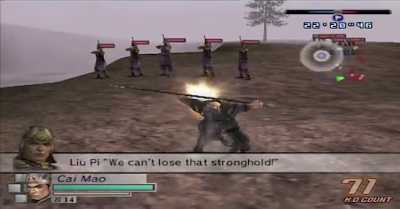Ah… Hm.
Well, let’s start the review.
With the newest title in the series, Senran Kagura Peach
Beach Splash, coming out this month in North America, I decided to stop
procrastinating and upload my review on Estival Versus.
*As a side note,
this game is what made me turn off the “recent activities” feature on my PS4.
Developed by Tamsoft, Senran Kagura series began in 2011
as a side-scrolling action game for Nintendo 3DS. Since then, the series has evolved
and branched out to other genres including 3D action, rhythm game, and even 3rd
person shooter with the release of newest title, Peach Beach Splash.
The story focuses on the lives of young female ninjas,
and the series is most famous for its unabashed, in-the-face fan service. But
that is not to say that the sex appeal is the only redeeming (?) quality the series
possesses. The developers have put in a lot of effort in creating an attractive
world rich with extensive character backgrounds and humor unique to Senran
Kagura franchise. Kenichiro Takaki, the producer of Senran Kagura, stated in
his E3 2015 interview he wanted to surprise the players who originally came in
for a simple sexualized action game with stories that players can be invested
in emotionally. Now, what started as a small project targeting a niche audience
in Japanese game industry has grown popular enough to boast a devout, worldwide
fan base.
Senran Kagura: Estival Versus is the seventh title in the
Senran Kagura series and is a direct sequel to Senran Kagura: Shinobi Versus.
The game was released in Japan on March 26, 2015 and North American on March
15, 2016. Game is a 3D action brawler, and the game’s main story is divided
into multiple missions. Each mission is generally composed of the following: 1)
advance the main story in a visual novel style, 2) combat, 3) advance the main
story again.
Including DLC characters, Estival Versus provides 35
playable characters (all females). Each character has her own unique move sets
and backstories. Visually, every character is meticulously designed and
pleasing to look at.
The combat is fun and extremely well designed. The
controls are simple and intuitive, and it is incredibly satisfying to wipe out
waves after waves of enemies with 1000+ hit combos. Each girl has a “Ninja Art
Gauge” on the bottom left of the screen, and using the gauge allows the girls
to perform “Shinobi Transformation.” Once transformed into shinobi form, girls
can perform powerful special attacks called “Secret Ninja Arts.” Each girl
possesses three unique “Secret Ninja Arts,” and these special attacks are not
only powerful, but visually stunning.
 |
| Yes, that's realistic. |
When the girls take damage, not only is the health
reduced, but the durability of the costumes they are wearing is reduced as
well. The costumes can be destroyed bit by bit until the girls are left only
with their undergarments in the end. This “clothing destruction” could be considered
as the hallmark of Senran Kagura series and is often the source of controversy whenever the topic of censorship in video games pops up. Personally,
I think this is a wonderful feature that should be incorporated into all combat
ga… I mean… it is an interesting feature.
To sidetrack for a moment, this reminds me quite a bit of
the game called Fighting Vipers; it
was a fighting game developed by Sega AM2 in 1995 and featured character armors
that can be broken off by opponents. I have a fond (?) memory of focusing more
on breaking off the armors of female characters than trying to win the game. *Cough* Anyway, I have a sneaking
suspicion that Kenichiro received some inspiration from Fighting Vipers series when he came up with the costume durability
concept.
I have been speaking highly of Estival Versus so far, but
there are negatives as well. For one, there is a very low replay value. Once
you have experienced the entire main story of the game, there is not much left
to do. While the narrative aspect of the game is certainly not bad (there were some
parts that even tugged on my manly heartstrings), it falls short when compared to other
role-playing games such as Final Fantasy or Persona series. In the
end, while you may pick up the game and play specific missions again for fun, you
will not find yourself wishing to go through the entire main story again.
Separate from the main story, Estival Versus also has
side stories tailored to each character. The side stories detract from the
emotional topics of main story and focus more on comedy. When I first saw this,
I was quite excited, but unfortunately, the narrative components of these side
stories ended up being very minimal and I was left disappointed. Completing
side stories felt like going through a series of pointless fights only to hear
couple amusing dialogues and unlock some gallery pictures. It feels like a
missed opportunity where unseen side of each character not available in the
main story could have been presented.
Estival Versus provides multiplayer features, but to be
honest, I had more fun with single player missions than online brawl against
human players. The fights in multiplayer end up feeling drawn out as human
players dodge or break away from combos easily and tend to run away when their
health runs low.
Game has its share of faults, but I can definitely say
that Senran Kagura: Estival Versus is fun to play. By the way, Yozakura is my
new waifu.
 |
| Yozakura best gal. |
Score: 7/10
(Good)
Playtime: 20
to 30 hours
Rating: M
for partial nudity, sexual themes, strong language, violence
Pros:
Character
design
Combat (Secret
Ninja Arts are flashy and fun)
Cons:
Low
replay value
Side
stories could have been more substantial

























